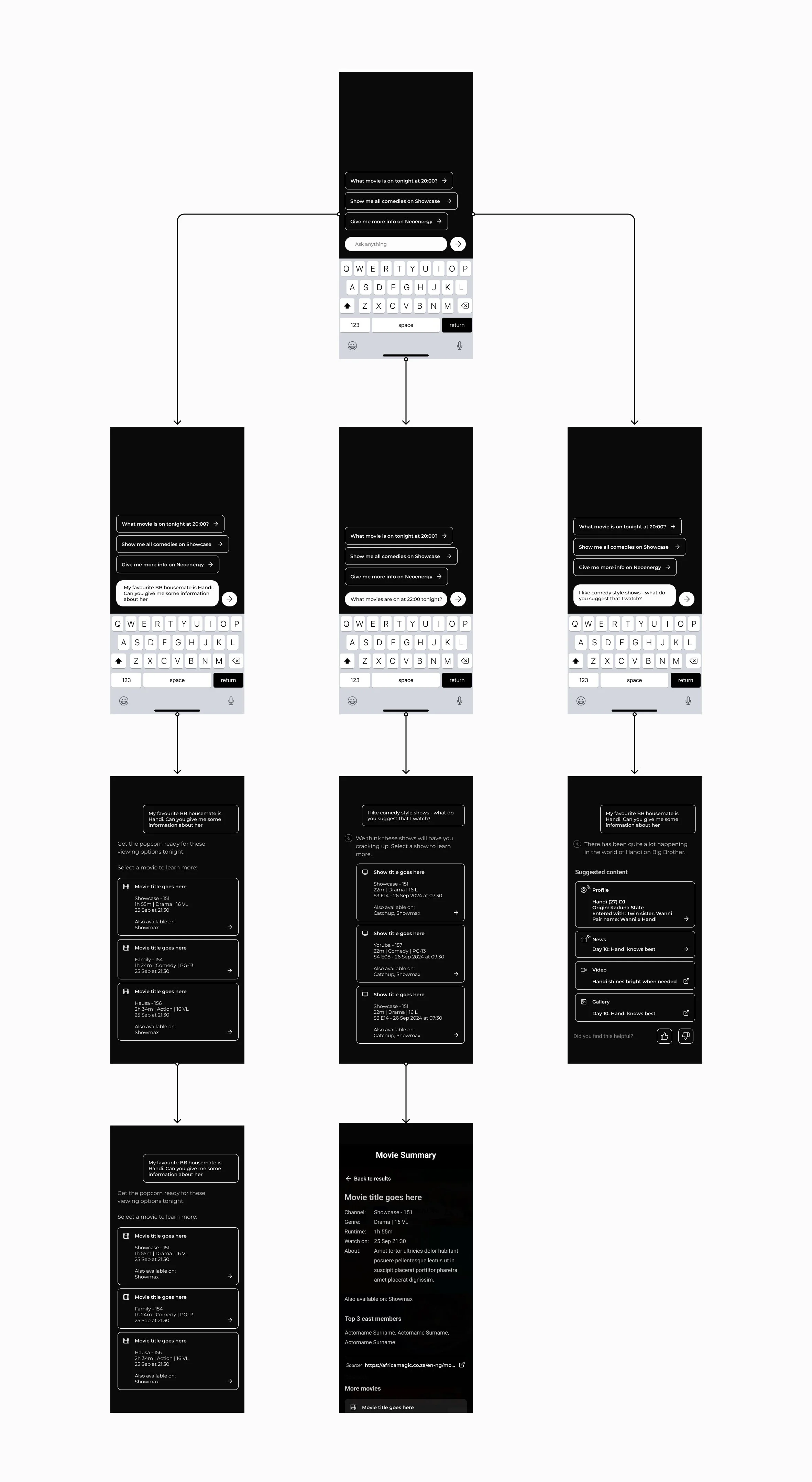Bringing tv discovery into the future with AI chat
Year
2024
Client
Don’t look down
DStv
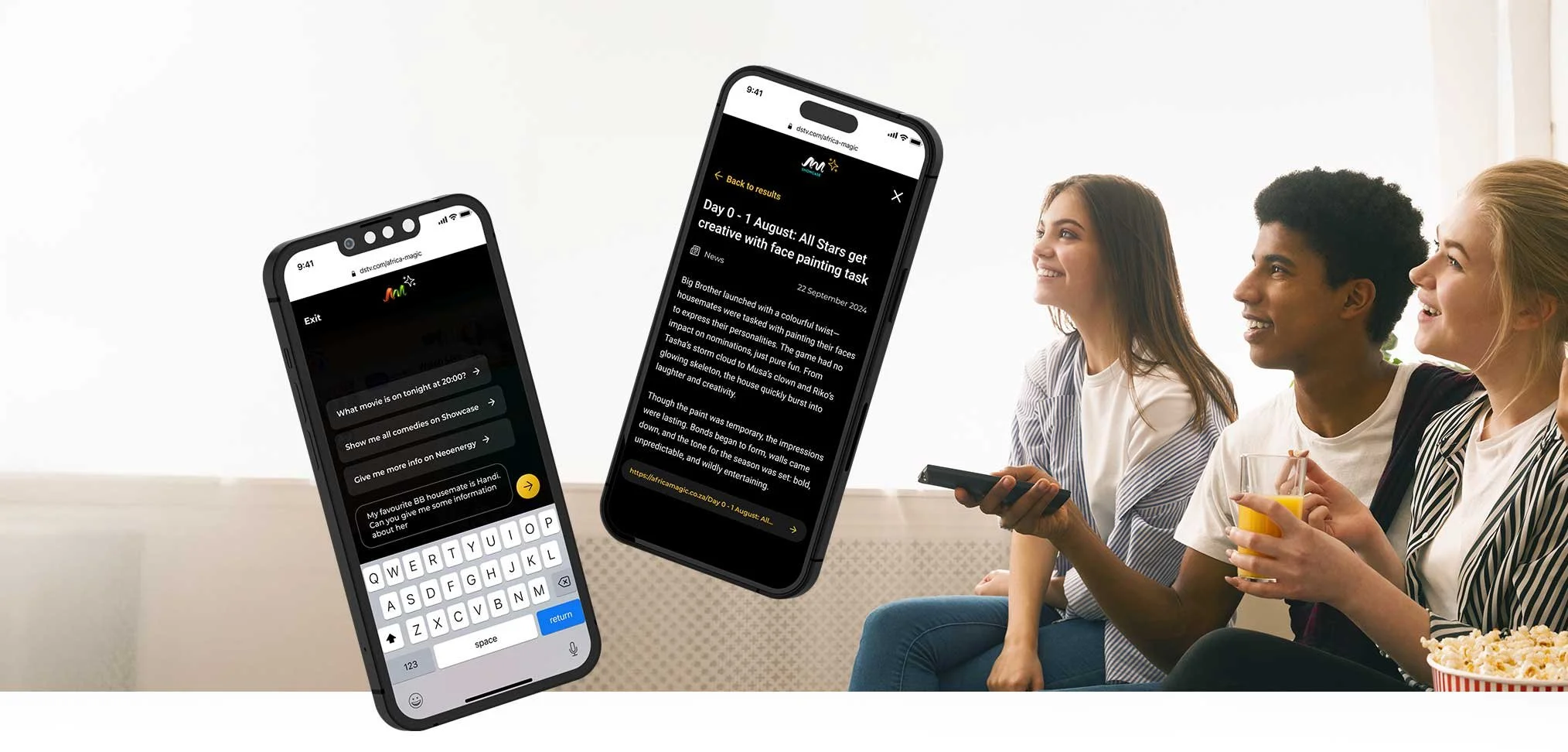
Don’t Look Down is a South African production company known for creating bold, locally relevant content across television, digital, and live platforms, including reality, documentary, and branded entertainment. They partner with DStv, a leading pay-TV platform in Sub-Saharan Africa owned by MultiChoice, which offers a wide range of local and international programming. Through this partnership, DStv supports the African creative industry by helping bring Don’t Look Down’s compelling, culturally resonant stories to broad audiences across the continent.
Don’t Look Down needed a simple, mobile-friendly way for users to easily discover programmes and related news or events based on their viewing habits and behaviour analytics.
My role
UX & UI Design
UX Research
Outputs
Concept delivery
Prototype
Scope of work
AI chat integration for DStv Africa channels
The challenge
Don’t Look Down faced a challenge where users struggled to easily discover their favourite shows and related news on mobile devices. Analytics and research showed that users want to quickly find shows, movies, and news related to their favourite content. The existing experience was fragmented and not user-friendly, causing frustration and reduced engagement. Don’t Look Down approached us to design a mobile-first, intuitive solution that simplifies discovery and keeps fans connected and engaged.
Research
In our research, we explored AI chat solutions to address the clunky and fragmented lookup methods typical of traditional TV schedule models online. We proposed a unified, single-input search method that allows users to easily find all show-related content in one place. This concept took the form of an AI chat agent leveraging large language models (LLMs) combined with channel-specific programming and news. This approach offers a natural, conversational way for users to discover content—a method that is growing rapidly in popularity.
Information architecture (IA) for AI
As part of the design process, we sketched user flows and wireframes to map out key user journeys within the AI chat experience. This included defining chat branches, response logic, and contextual actions based on various user intents. By visualising these flows early, we were able to anticipate user expectations, identify decision points, and ensure a smooth conversational path. These prototypes helped us explore how the AI agent could surface relevant content quickly, while maintaining clarity, efficiency, and a sense of control for the user.
Conceptualisation
For the final output, we conceptualised an AI chat agent that integrates seamlessly into existing channel websites, enhancing content discovery without disrupting the current user experience. To ease users into this new interaction model, we introduced a simple two-step coaching method that familiarises users with the chat interface and its capabilities before allowing them to try it for themselves.
We also took regional user behaviour into account, particularly in African markets where data access is often limited and mobile browser usage is high. In response, we designed a low-data mode where users can explore show schedules and related content exclusively via chat. Website content in this mode is optimised for inline responses, enabling quick, conversational access while reducing load times and data usage. This approach ensured the AI agent remained accessible, intuitive, and valuable across diverse usage environments.

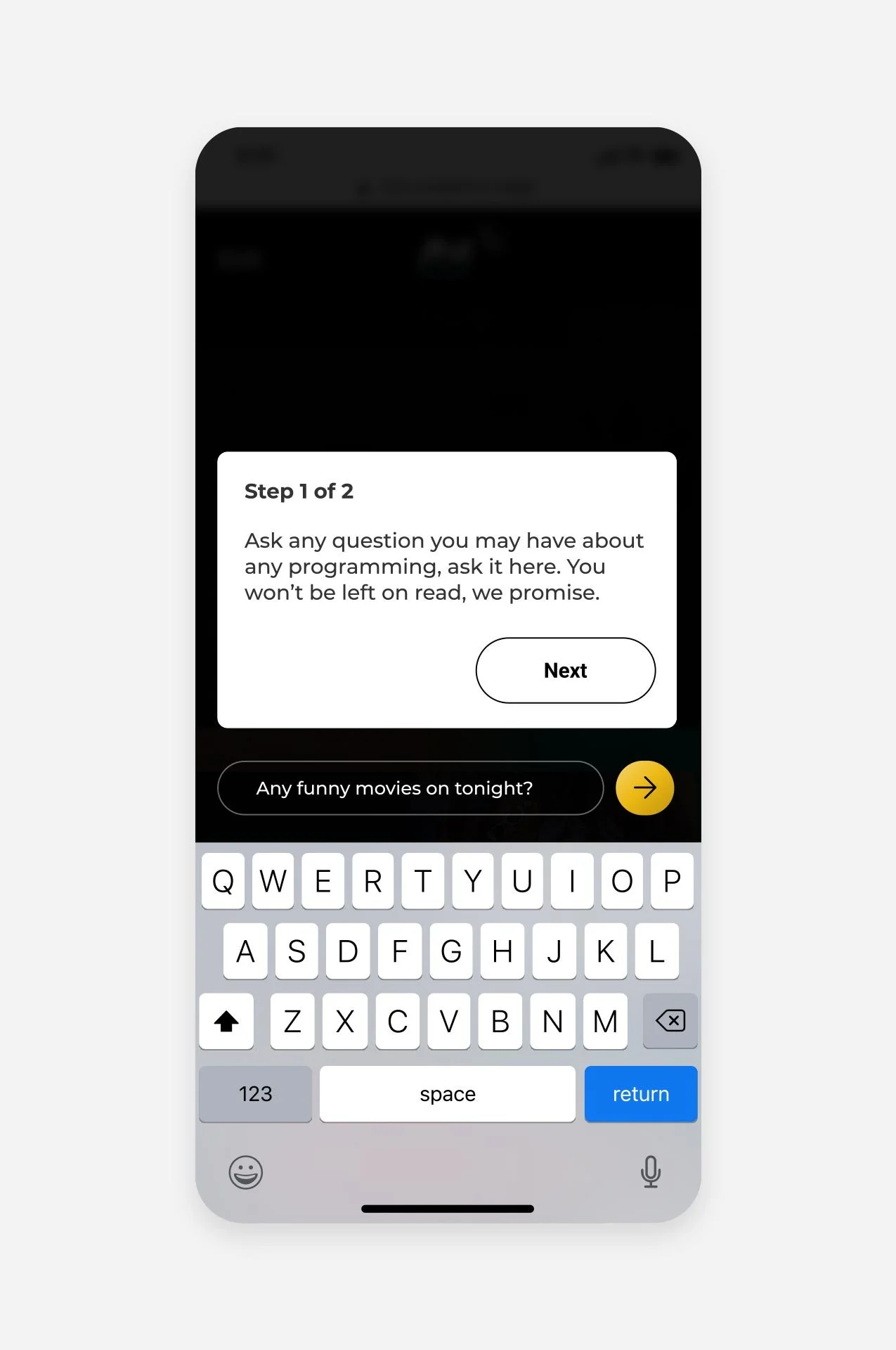

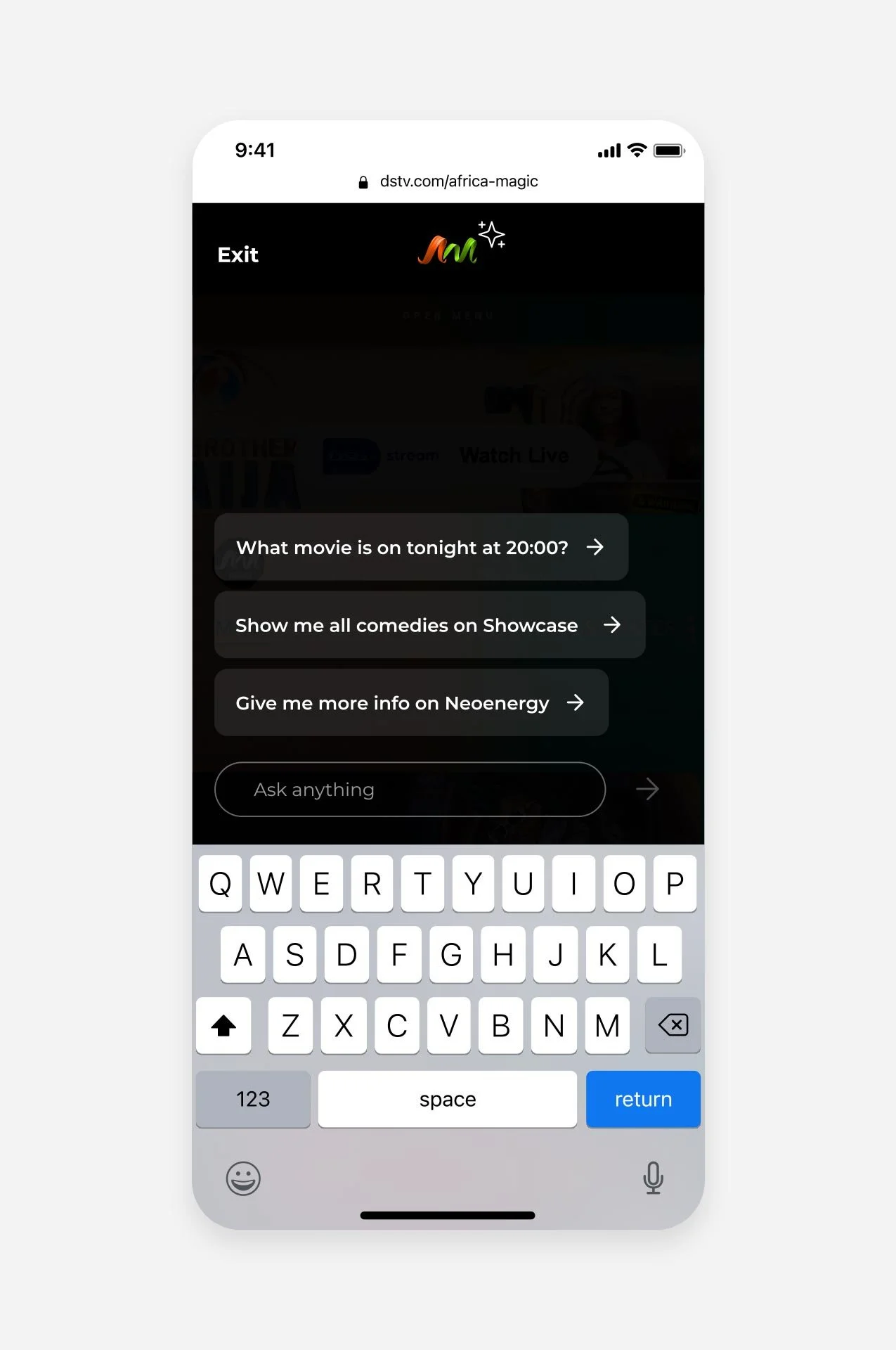


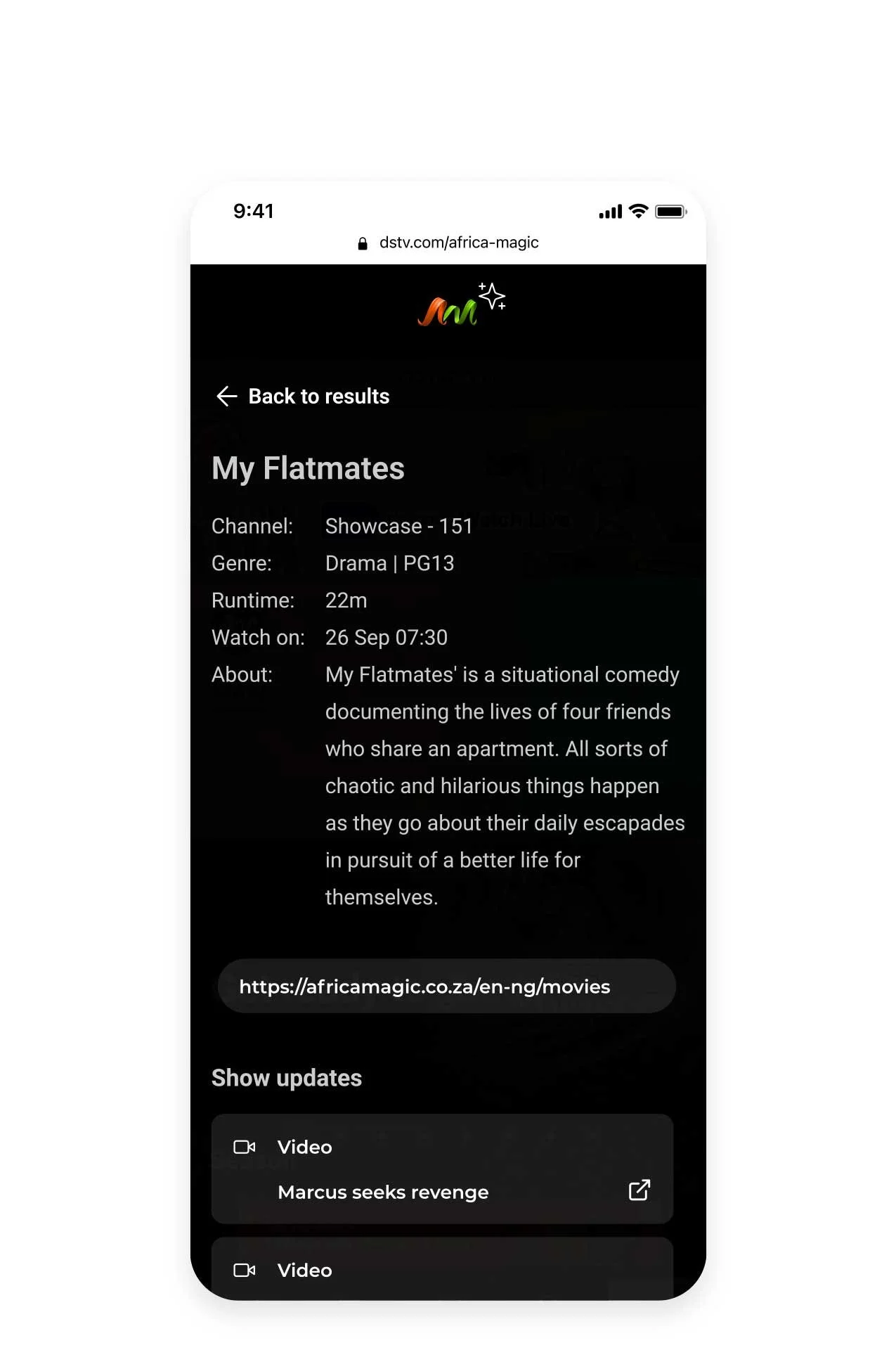
What I learned
Clarity and Simplicity Are Crucial
Reducing noise in the user experience—whether through input methods, request formats, or result presentation—is essential. A simplified flow not only improves response speed but also helps users find accurate answers more quickly, especially when powered by a trained LLM.
Edge Cases Matter
Designing for edge cases and peripheral requests is critical. Users should never hit a dead end. Proactive handling of uncommon or ambiguous queries ensures a more complete and satisfying experience.
Technology and Cost Shape Feasibility
Delivering a truly improved experience over traditional lookup methods is heavily dependent on the capabilities of the underlying technology—and the costs associated with running and maintaining it. These constraints must be balanced carefully with user needs and business goals.

